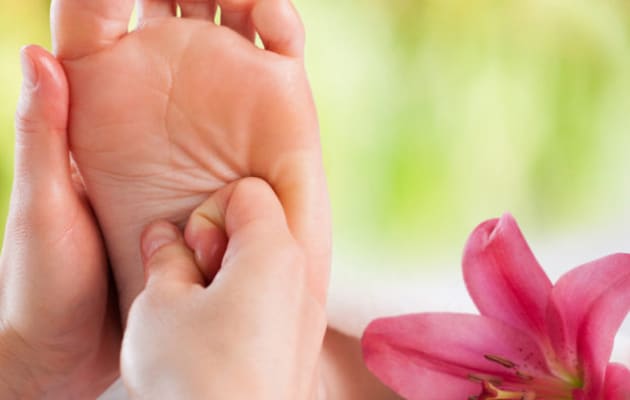Reflexology is an art because much depends on how skillfully the practitioner applies his or her knowledge, and the dynamics that occur between the practitioner and the recipient. And because it is based on physiological and neurological study, it is also considered a science. Reflexology is a holistic healing technique. The term “holistic” is derived from the Greek word “holos”, which means “whole.” The goal of reflexology is to treat the individual as a complete entity, incorporating and healing the body, mind and spirit.
Research has found that reflexology is not only beneficial as a tool for relaxation and stress relief. It has been established that it is also an effective device for improving circulation, relieving pain, and speeding up the body’s process of detoxification. Reflexology is also good for people who are recovering from surgery due to its positive stimulating effect on the immune and nervous systems. In fact, many people with illnesses such as allergies, acid reflux, migraines, pre-menstrual syndrome (PMS), menopause, insomnia, fertility problems, and even arthritis have been helped tremendously by reflexology treatments.
Because reflexology works to put the body in a state of well-being, it is beneficial to every system in the body. It has been shown to relieve many common pregnancy complaints including headache, nausea, backache, sleepiness, fatigue, constipation, swollen ankles, and digestive problems. However, a lot of practitioners have been giving this holistic approach for most cases to patients to treat anxiety.
From side effects of chemotherapy to pain and depression, symptoms associated with cancer and its treatment can impinge on quality of life almost as much as the disease itself. No equipment needed nor invasion of privacy are some of the ease of reflexology which can be applied in a medical environment which makes it convenient alternative treatment.
In 2006, a team of medical school researchers at University of Udine, Italy, reported positive results for the use of reflexology foot massage to treat anxiety in patients admitted to an oncology unit for a second or third round of chemotherapy. And, in yet another recent study, to treat anxiety for breast and lung cancer patients, the reports said that the patients experienced relief after reflexology. The breast cancer patients also experienced a decrease in pain. Furthermore, the study also claimed that women that had at least 10 reflexology sessions showed reduced labor times and complications than women who did not have the treatments.
Studies have also shown that patients that received reflexology treatment after surgery experienced far less pain than the patients that took painkillers alone. Moreover, reflexology was shown to be more effective than catheterization in patients with retention of urine after surgery.
Reflexology is safe, non-invasive, and effective therapy for everyone that can and should be used throughout a person’s lifetime. In a society that relies heavily on chemically laden prescription drugs for remedy, reflexology is definitely showing a lot of promise as an effective alternative treatment.




